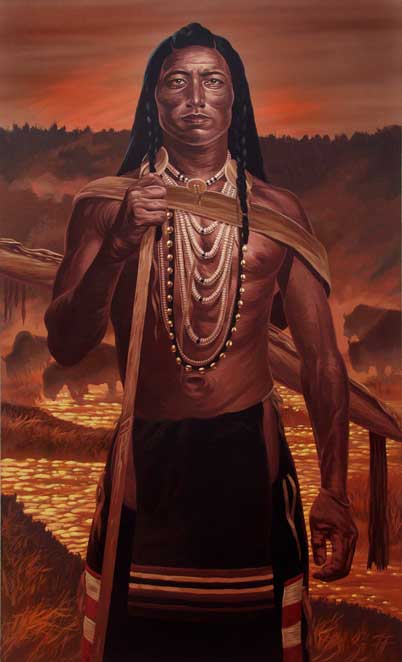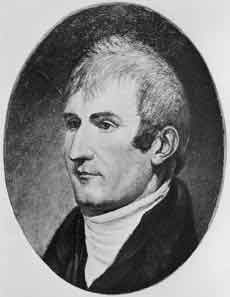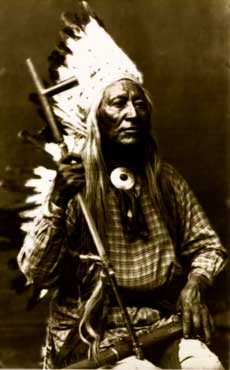

Meriwether Lewis


Justin Mullin
8th American History
Rossville Jr. High
Plains History Project
2004
|
|
 |
| The Shoshone Indian Tribe has had a very unique history. They've had some good moments & some bad moments. The history of this tribe, is going to take your breath away. | |
| Around Eastern Idaho, in the area of Interstate 15 and Interstate 86, there is the 544,000 acre Fort Hall Indian Reservation, that the Shoshone, and Bannock tribes have roamed for several millenniums. Before history was even recorded, the tribes were roaming their nation of Wyoming, Utah, Nevada, and Idaho. | |
| The Shoshone would hunt for salmon, and they would also, ( like most Indian tribes), hunt for buffalo. To help the hunt, they were introduced to horses, around the year 1700. The only downside to hunting the buffalo, was that the Hidatsas, and the Blackfeet-Astinas had driven the Shoshone band away from the buffalo. The Shoshone tribe had tried to get their land back from their enemies, but that put them at risk for an attack, like the one in 1805. | |
| In that certain attack, the Astinas killed and also captured many Shoshones. They also destroyed their teepees, and stole their horses. The reason that the Shoshones were not ready, and equipped, is because the Spanish would not trade for muskets with them. | |
| A little later on in the history of the Shoshone is very important. One day some Shoshone Women were gathering food a few miles from their village, when they saw four strangers drawing near. | |
| It was Lewis and his Three Amigos. The women were fearful at first, but when the men laid down their guns, gave them trinkets, and painted their faces with vermilion, the women knew that the men came in peace. So, as the Shoshone war party of about 60 soldiers approached Lewis and his men, the women convinced the party that Lewis and his men were at peace with them. Lewis had strengthened his peace with the tribe, by offering them an American flag. | |
| The Principal Chief, named One Who Never Walks, welcomed Lewis and his men, and from there on out, the tribe treated them as honorable guests. The Indians shared what food that they had with them, and let them stay in their own teepee. Lewis and his men were the first white people that the Shoshone had ever seen. | |
|
When Lewis and his men had to depart to continue their long expedition,
they would have to travel to the Bitter foot mountains.
Horses would be crucial for such a mountainous exploration, and the men were
hoping that the Shoshones were going to be kind, and let them have a few,
from their impressive herd of at least 700. Lewis had highly depended
on the Shoshones, as he once said. " If we do not find the Shoshones,
I fear that the successful issue of our voyage will be very doubtful ".-
Meriwether Lewis |
 |
| Cameahwait and a group of Shoshone warriors traveled with Lewis to barter for horses. The only way to communicate with them was a translation chain. A little bit into the negotiations, the Shoshones realized that they had a very large coincidence on their hands. Sacagawea, an Indian woman who led Lewis, recognized Cameahwit as her brother from who she was separated from a little while back. After an emotional reunion, the negotiations proceeded and Cameahwit agreed to barter for the horses. The Shoshones were most concerned about acquiring guns and ammunition in return for the horses. Lewis pledged that "upon the return of the corps, white men would come to them with a number of guns, and every other article necessary to their defense and comfort." | |
| Another historical part in Shoshone history, is the late Chief Washakie. Washakie was born in 1804, in the are of the Green River Valley, and the present day location of East Utah, and Wyoming. His father was of the Flathead Tribe. He was killed in a raid in the Blackfoot mountains. His mother a was of the Shoshone tribe. The name Washakie means Rawhide Rattle. He did not get his name until he killed his first buffalo. |  |
| As Washakie grew older he assisted early settlers, traders, and trappers. He also fought with USA in their wars against the Sioux tribes. He is probably most famous for telling his tribe not to fight with the whites. He is also well known for exchanging Shoshone lands for a reservation in Wind River, WY, at witch were he would be chief. Washakie was always a friend to his white brothers. He never would engage in battle with them, even though they would often terrorize his tribe. | |
| When Washakie died in the year of 1900, the inscription upon his grave read, " Always loyal to the Government, and his white brothers. | |
|
Justin Mullin 8th American History Rossville Jr. High Plains History Project 2004 |
Bibliography |
Revised: February 06, 2004 . |
|